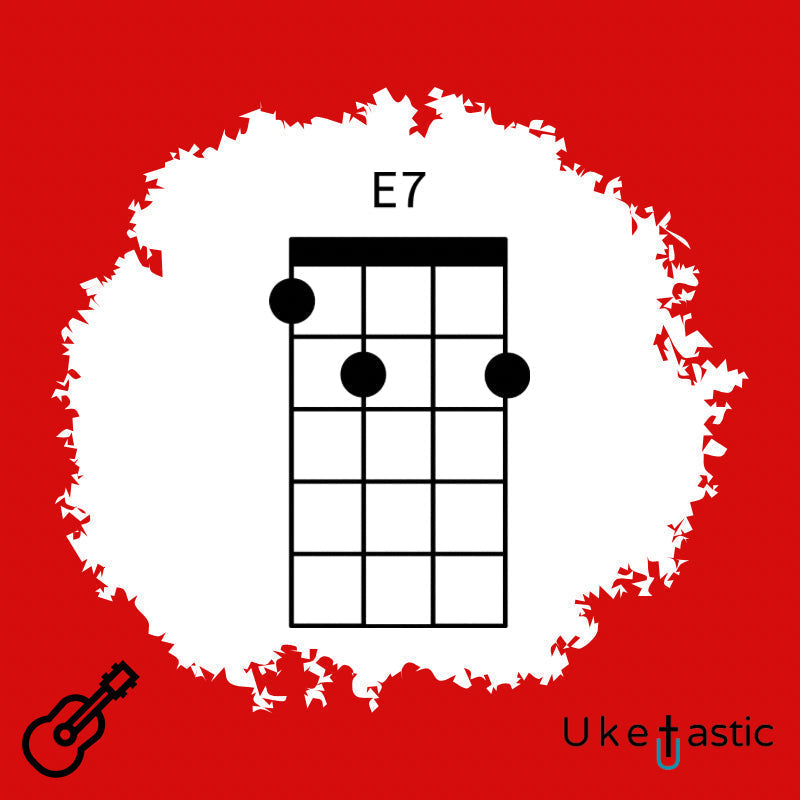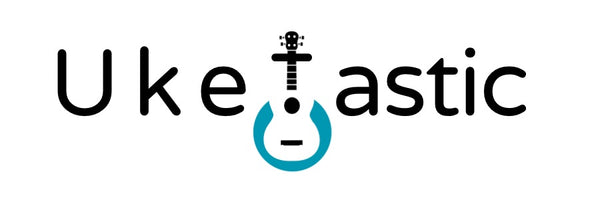
Debunking the E7 Chord on a Ukulele
Share
The E7 Chord on a Ukulele: Demystified
When it comes to playing the ukulele, there are certain chords that every player should have in their repertoire. One such chord is the E7 chord. In this article, we will debunk some common misconceptions surrounding playing the E7 chord on the ukulele and explore its usage, similarities, and differences compared to the E chord.
Understanding the E7 Chord
The E7 chord is a popular choice among ukulele players due to its unique sound and versatility. To play the E7 chord on a ukulele, place your index finger on the first fret of the G string, middle finger on the second fret of the C string, and ring finger on the second fret of the A string. Strum all four strings, and you'll hear the distinctive sound of the E7

- 1st string (A): 2nd fret
- 2nd string (E): 0 (open string)
- 3rd string (C): 2nd fret
- 4th string (G): 1st fret
So, from top to bottom, it's 1-2-0-2. Remember, the top string is the G string, closest to your chin when you're holding the ukulele.
New to ukes? Make sure you’re using the right instrument! Browse our best-selling ukuleles for beginners and seasoned players alike.
Common Misconceptions
One common misconception is that the E7 chord is rarely used in songs. However, this couldn't be further from the truth. The E7 chord is widely utilized in various musical genres, including blues, jazz, and pop. It adds a bluesy and jazzy flavour to your playing and can be substituted for the standard E chord in many songs.

Songs that Utilize the E7 Chord
Many popular songs feature the E7 chord, making it an essential chord to learn for ukulele enthusiasts. Some examples include:
- 'Hallelujah' by Leonard Cohen
- 'Stand By Me' by Ben E. King
- 'Brown Eyed Girl' by Van Morrison
- 'Blue Hawaii' by Elvis Presley
These songs showcase the versatility of the E7 chord, as it can be used to add a touch of soulfulness and richness to your playing.
 Want more songs to practice with? Check out Lindsay Muller’s beginner ukulele song guide.
Want more songs to practice with? Check out Lindsay Muller’s beginner ukulele song guide.
Differences between the E7 and E Chords
The E7 chord differs from the standard E chord in one crucial aspect: the inclusion of the seventh note. The E7 chord adds a G# note to the E major triad, giving it a distinct sound. This alteration creates a more complex and bluesy feel, making it an excellent choice for creating tension and resolving to other chords.
While the E7 chord may initially seem more challenging to play compared to the E chord, with practice, it becomes second nature. As you become more comfortable with the finger placement and strumming patterns, you'll find that the E7 chord opens up a world of possibilities for your ukulele playing.
If you’re looking to elevate your sound while practicing chords like the E7, it’s worth investing in a quality instrument. A well-crafted ukulele not only improves tone but also makes learning and transitioning between chords easier. Discover a harmonious blend of quality ukulele instruments at Uke-Tastic and find the perfect fit to support your musical journey.
Alternate Ways to Play the E7 Chord
While the standard E7 chord shape mentioned earlier is the most common way to play it on the ukulele, there are alternative voicings you can explore. These alternate fingerings can add variety to your playing and allow you to experiment with different sounds.
One alternative way to play the E7 chord is by using your index finger to bar the fourth fret of the ukulele. This shape is commonly referred to as the E7 barre chord. It requires pressing down all four strings at the fourth fret and strumming from the G string down. This voicing can be particularly useful when you want to create a fuller and more sustained sound.
Another variation is the E7 chord played as a partial bar chord. In this fingering, you use your index finger to bar the top three strings at the fourth fret, while leaving the A string open. Strumming from the A string down will produce a unique and bright sound.
Putting it into Practice
Now that you understand the importance and versatility of the E7 chord, it's time to put it into practice. Start by familiarising yourself with the standard E7 chord shape and strumming it to get a feel for its sound. As you become more comfortable, try incorporating it into songs that you're already familiar with.
Remember to take it slow and practice regularly. Over time, you'll develop muscle memory and be able to switch effortlessly between chords. The E7 chord will become an essential part of your ukulele playing toolkit, allowing you to add depth and complexity to your music.

When and Why to Use the E7 Chord
Understanding how to play a chord is only half the journey—knowing when and why to use it is what brings your playing to life. The E7 chord is often used to create a feeling of tension and resolution in a progression. Because it’s a dominant 7th chord, it naturally wants to lead back to an A chord or another tonic resolution, which is why it’s so commonly found in blues, jazz, and soulful pop music. You might use the E7 chord:
• Before transitioning to an A major or A minor chord, to create a satisfying musical “pull”
• In place of a regular E chord, when you want to add emotional depth or a vintage, bluesy flavor
• In jazzier arrangements, to add colour and movement to simple progressions
By learning to listen for that subtle tension and release, you’ll start recognising where the E7 naturally fits. Try experimenting by swapping it into songs you already know—it might surprise you how much character it adds.
Try This Chord Progression with E7
To get a feel for how the E7 functions musically, try this classic I–IV–V7 progression in the key of A:
A – D – E7 – A
This is a foundational progression used in countless songs across genres—from blues and rock to country and folk. Strum through it slowly and listen to how the E7 chord adds just the right amount of tension before resolving back to A.
Want to switch it up? Try:
A – F#m – D – E7 – A
This adds more emotion and musical depth while still giving E7 a standout role.
Suggested Strumming Pattern (4/4 Time)
Down – Down – Up – Up – Down – Up
Count: 1 – 2 – & – & – 4 – &
This popular pattern adds movement and suits the laid-back vibe of the ukulele. Practice slowly at first, then gradually increase your tempo as you become more comfortable with the chord transitions.
Conclusion
The E7 chord on a ukulele is a versatile and widely used chord that deserves a place in every ukulele player's repertoire. It adds a touch of bluesy and jazzy flavour to your playing, making it an excellent choice for various musical genres. By debunking the misconceptions surrounding the E7 chord, we have highlighted its importance and showcased how it can be used to enhance your ukulele playing.
So, pick up your ukulele, practice the E7 chord, and explore the world of possibilities it offers. Whether you're strumming along to your favourite songs or creating your own melodies, the E7 chord will undoubtedly elevate your ukulele playing to new heights.
Happy strumming!
Ready to explore your next ukulele?

